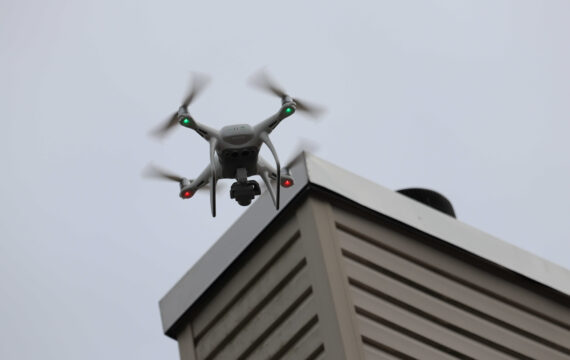As technology has moved forward, unmanned aerial vehicles (UAVs), or drones, have spread beyond the military sector to become useful business tools. Most companies are familiar with the use of drones for marketing purposes. But industries like agriculture, delivery, insurance, disaster management, and real estate can benefit from drones as well.
Piloting a drone is harder than it looks, however. It’s one thing to do fly a drone for short distances within well-known airspace and a completely different thing to fly a drone to a distant location far beyond eyesight. If companies decide to use drones to meet business needs, they need to be aware of certain limitations and find reliable drones mapping solutions based on location technologies. What market opportunities can drones bring to different companies? How can you manage drone navigation for distant flights? Is there any good mapping software for drones on the market? We’ll answer each of these questions.

Drones mapping opens new opportunities for businesses

Small and large companies around the globe are already experiencing the perks of using drones for business purposes. Businesses are using drones for videography, express delivery, advertising, mapping, surveillance, storm tracking, risk monitoring, and providing wireless internet access, among other things. When used together with drone 3D mapping software, drones can meet many business needs and help companies increase revenue.
Take farming, for example – or precision agriculture, to be exact. According to a report by Global Market Insights, the agricultural drone market will be worth up to $1 billion by 2024. With farming drone mapping, farmers will be able to inspect large areas of land from the sky, monitor water use and crop health, apply fertilizers, identify pests, and analyze soil all in real time and all remotely. With the help of drones, which can automate certain aspects of farming and perform tasks that farmers simply can’t, agriculture software solutions are cutting expenses, eliminating human error, and maximizing return on investment.
As far as non-profits are concerned, drones may become vital to rescue missions. Drones can gather information, search for missing people, find them using heat sensors, and supply medicine, food, and other essentials quickly to areas that cannot be reached by other means.
No-fly restrictions businesses face with drones
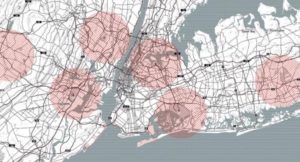
Although Violeta Bulc, the EU Commissioner for Transport, believes that drones “mean innovation, new services for citizens, new business models and a huge potential for economic growth,” companies often face regulatory issues surrounding the use of drones for business. To avoid obstacles and ensure safe drone piloting, UAVs must follow flight restrictions, remain within the operator’s line of sight and stay away from no-fly zones. These areas, also known as no-drone zones, include military installations, power plants, industrial installations, airports, accident scenes, large crowds, and many other spaces.
Commercial drones also need to respect people’s privacy and comply with applicable legislation regarding privacy and data protection. This means no flights may be made above private land without a certificate of exemption for commercial further, higher, or night flights – and getting this certificate is a long and costly procedure.
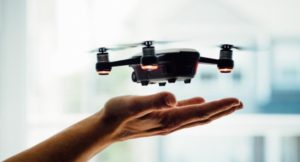
In the US, where more than 400 drones have been involved in major crashes since 2001, you need a remote pilot certificate to operate a drone commercially. In the EU, you’re not obliged to get a drone pilot certificate for unmanned vehicles under 2 kilograms, but altitude limits and certificate requirements vary across EU countries. The success of doing business using drones in the European Union largely depends on local regulations, so make sure to study various drone-related reports that offer insights into the commercial drone industry.
Besides legal issues, businesses can also encounter technical issues. Manufacturers have a long way to go in extending battery life, improving traffic management, increasing the range of sensors, including more integrated safety features, and offering greater levels of autonomy.
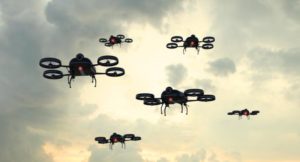
Drones fleet management, mapping with drones, and drones navigation are another issues that need further investigation. Clearly, drones don’t use maps like people or land vehicles do. Instead, they fly according to aeronautical charts that they get from the mapping software for drones. Pilots use these charts to determine a drone’s position, build the best route, find alternative landing areas, and so on. This works well for a single drone, but how can you efficiently manage the navigation of an entire fleet of drones during a long flight? Can you be certain that the whole fleet will make it to the destination safely? Yes, with the drones fleet management software development services.
Conquer the airspace with mapping software for drones
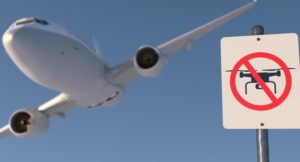
It’s not all bad news, though. As the use of drones for commercial purposes gains momentum, more effort is being put into overcoming drones 3D mapping obstacles.
For example, to establish an EU-wide framework for safe drone piloting, the European Commission has already proposed U-space, “a set of specific procedures designed to support safe, efficient, and secure access to airspace for large numbers of drones.”
Because drone battery life is a major obstacle for using UAVs for business, some manufacturers are trying to solve the problem by improving lithium batteries – the kind most commonly used in drones. Others are building hybrid gasoline-electric multirotor drones. Lithium-air batteries promise almost seven times higher energy density per kilogram than Lithium polymer batteries. There are also hybrid diesel-electric engines for drones that convert energy from a diesel engine to electricity to power a motor that turns the propeller.
As far as no-fly zones are concerned, there are mapping drones tools like the NoFlyDrones map that shows where drones can and can’t fly in the UK. Some drone manufacturers are now programming their drones for GIS mapping using GPS systems with the coordinates of airports around the world. You can check the drone regulations database to find national regulations and links to official regulatory documents.

Advanced drone navigation for safe and regulated flight
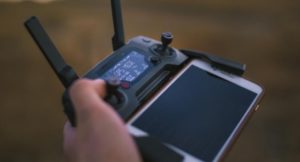
The problem of drone 3D mapping and navigation, namely drone fleet navigation, is a pain for the entire UAV community and especially for companies focused on conquering the drone software market. A leading provider of aeronautical data and solutions used in drones for aerial mapping cooperated with Intellias to create a drone data platform to support safe and regulated flights. Together, we created a navigation solution that opened the sky to 80% of drone-using businesses in the US.
The idea behind this project was to create precise aeronautical maps and a secure, scalable platform for mapping with drones that would allow air traffic control systems, drone operators, and drones to communicate directly. Intellias was responsible for map production and platform architecture, including API design, data migration, and quality control.

While working on drones mapping, Intellias had to work with an enormous amount of data. Our data engineers enriched 2D maps with third-party information about no-fly zones, temporary flight restrictions, power lines, building heights, and weather. All of this data was crucial for safe drone piloting. Another prerequisite for safe flights was a highly complex flight profile that took into consideration aviation regulations, automated authorization in controlled airspace via D-NAS, energy consumption, possible obstacles, and more.
The final solution incorporated airspace maps with global coverage, information about no-fly zones, a dashboard for communicating flight plans with airports, and obstacle recognition based on real-time altitude, heading, and speed. Additionally, this solution featured mobile and web apps for pre-flight planning and regulated flying. The client’s drone navigation system also included localized aviation regulations for the US, the UK, Japan, New Zealand, and Canada, along with safety recommendations for drone operators.
Today, drones are continuing to prove that they’re more than just fancy tools for aerial photography. And while there are still certain obstacles regarding the use of UAVs for business, companies worldwide are putting a lot of effort into fixing technical and regulatory issues connected with safe drone piloting. For instance, Intellias partnered with a US technology startup to craft a drone navigation solution that helped create aeronautical maps, ensure regulated flights, and customize airspace navigation. Together, we continue prototyping technologies for dynamic geofencing, congestion management, terrain avoidance, and more.
If you’re looking for a trusted partner to develop navigation solutions for drones, don’t hesitate to contact Intellias.


